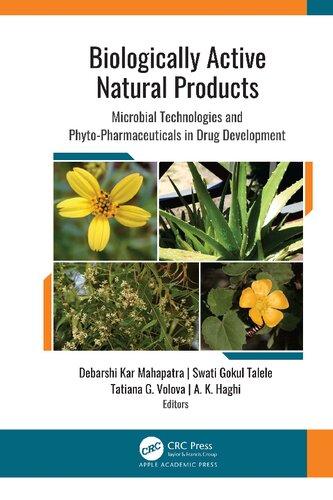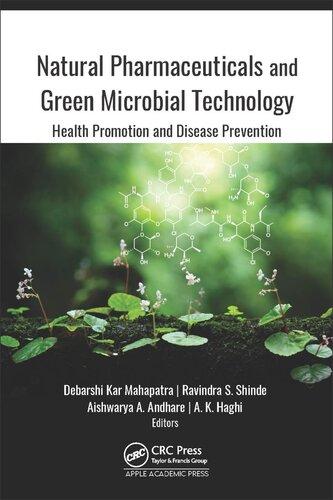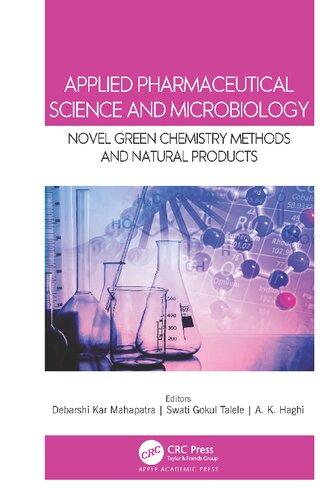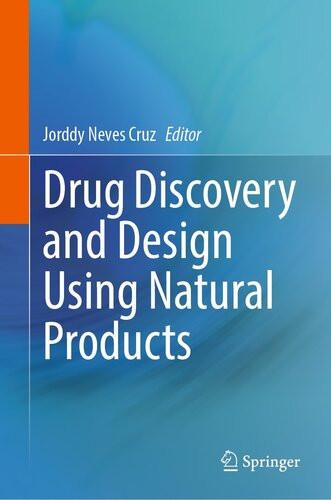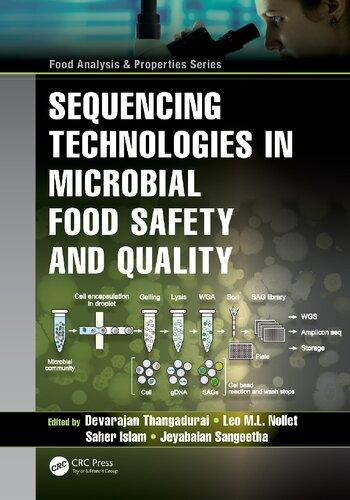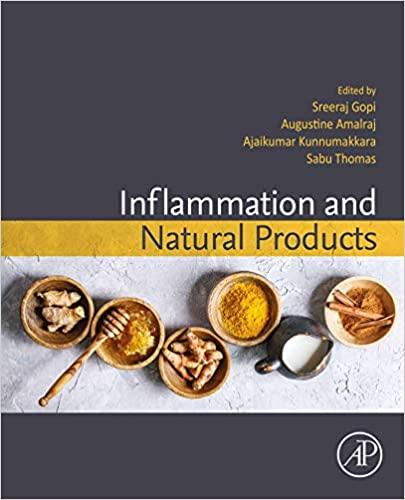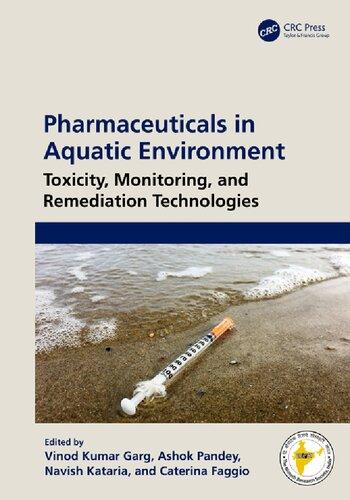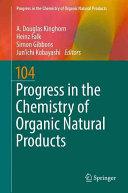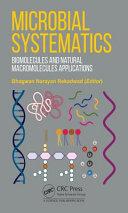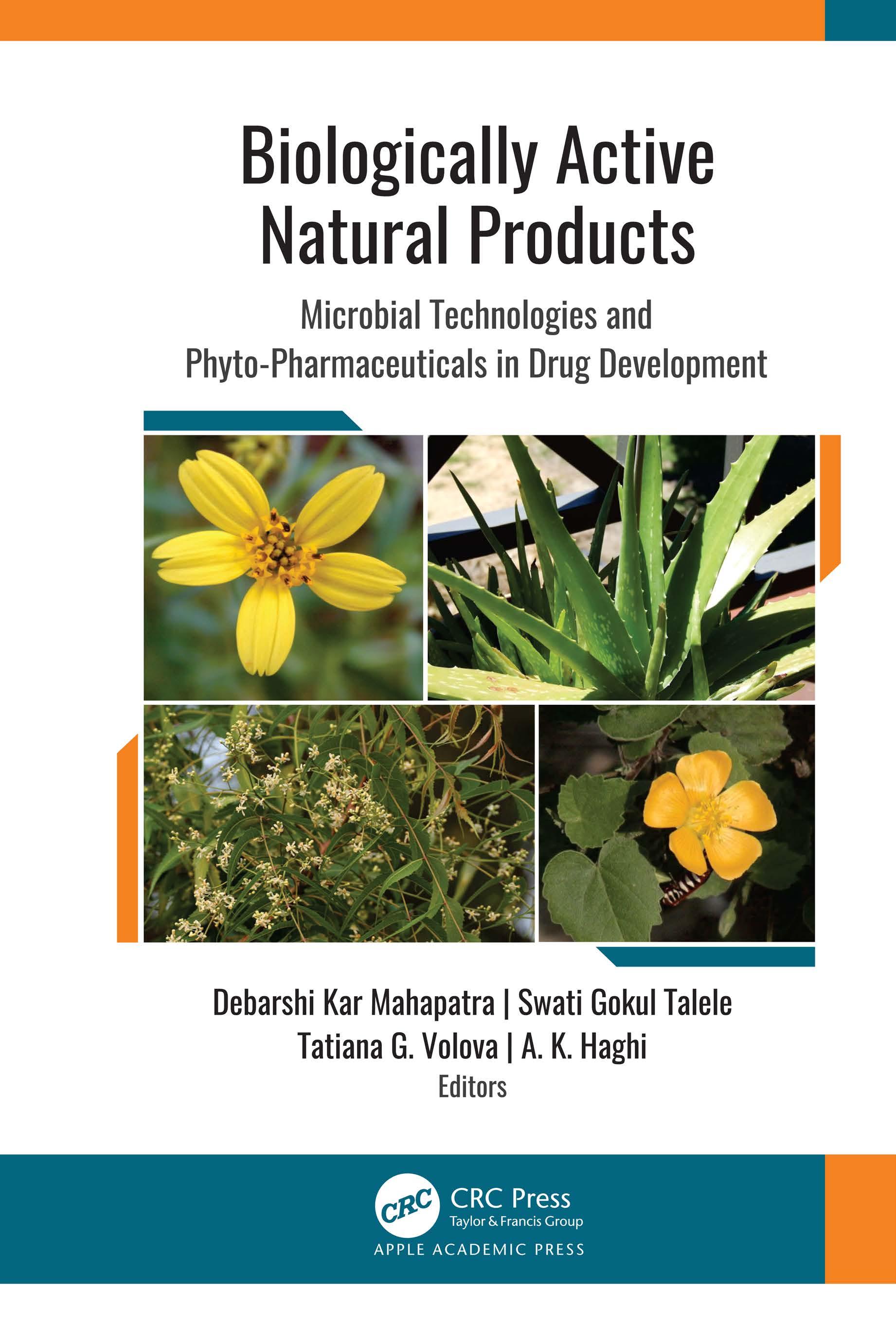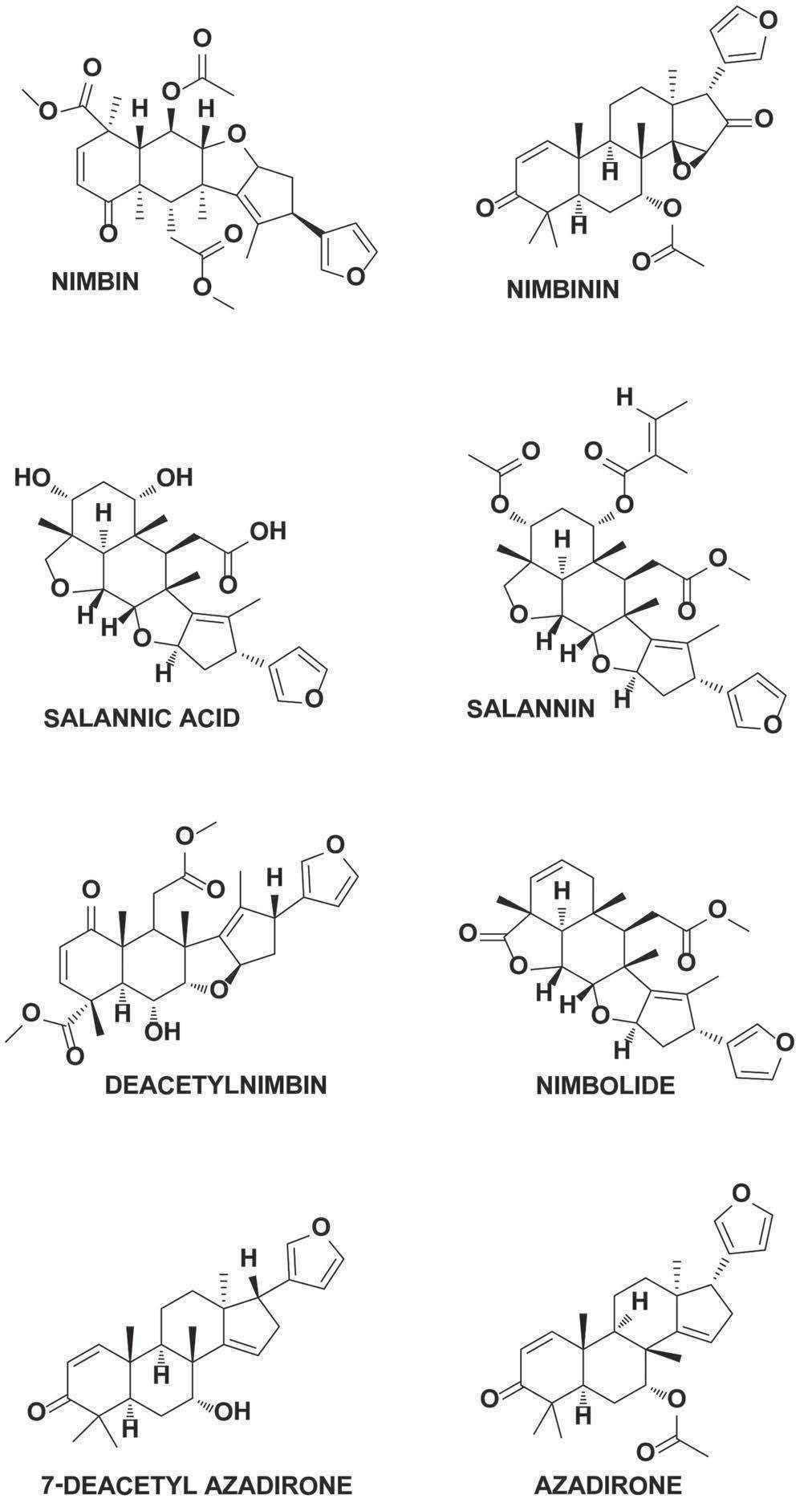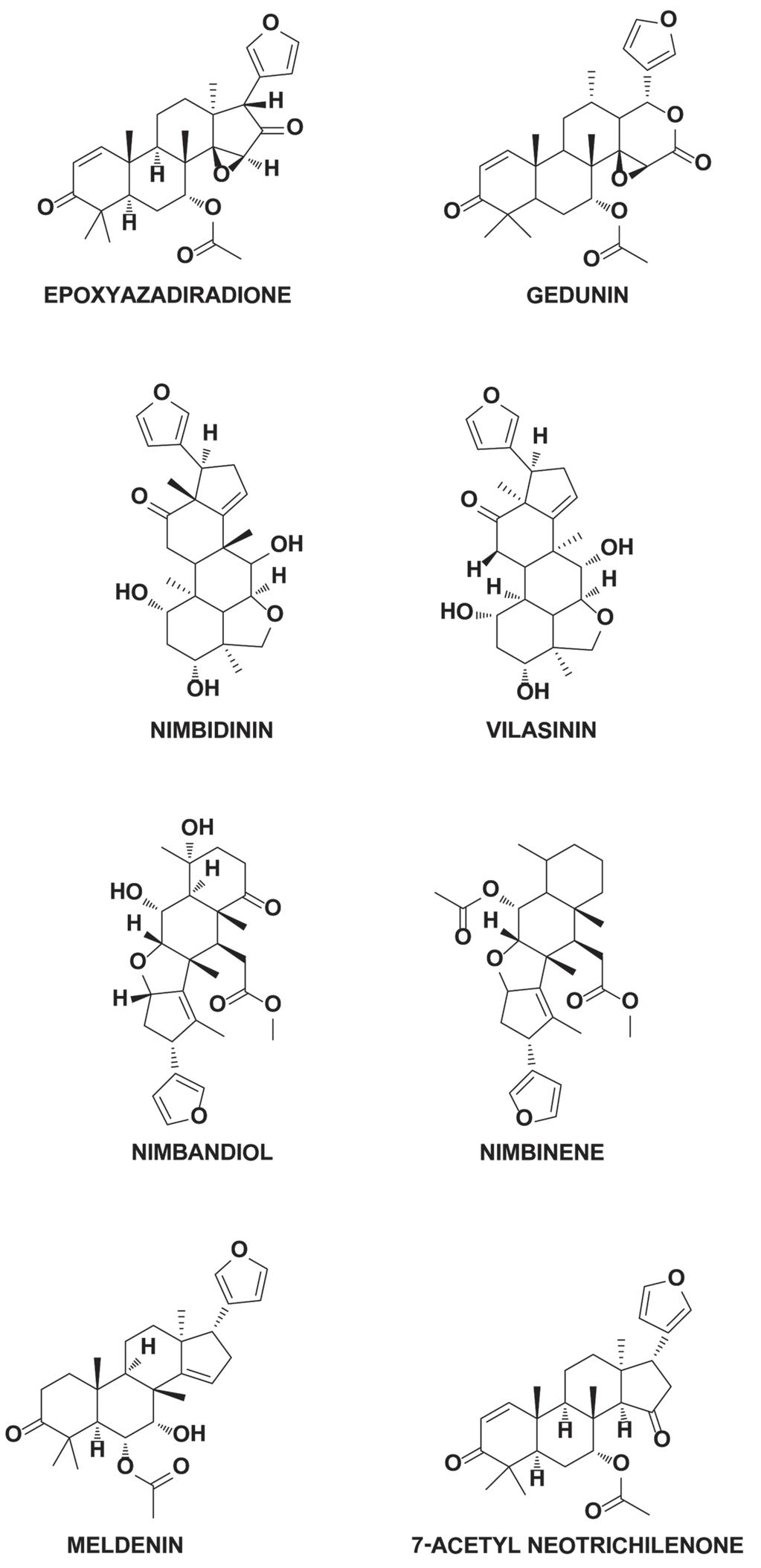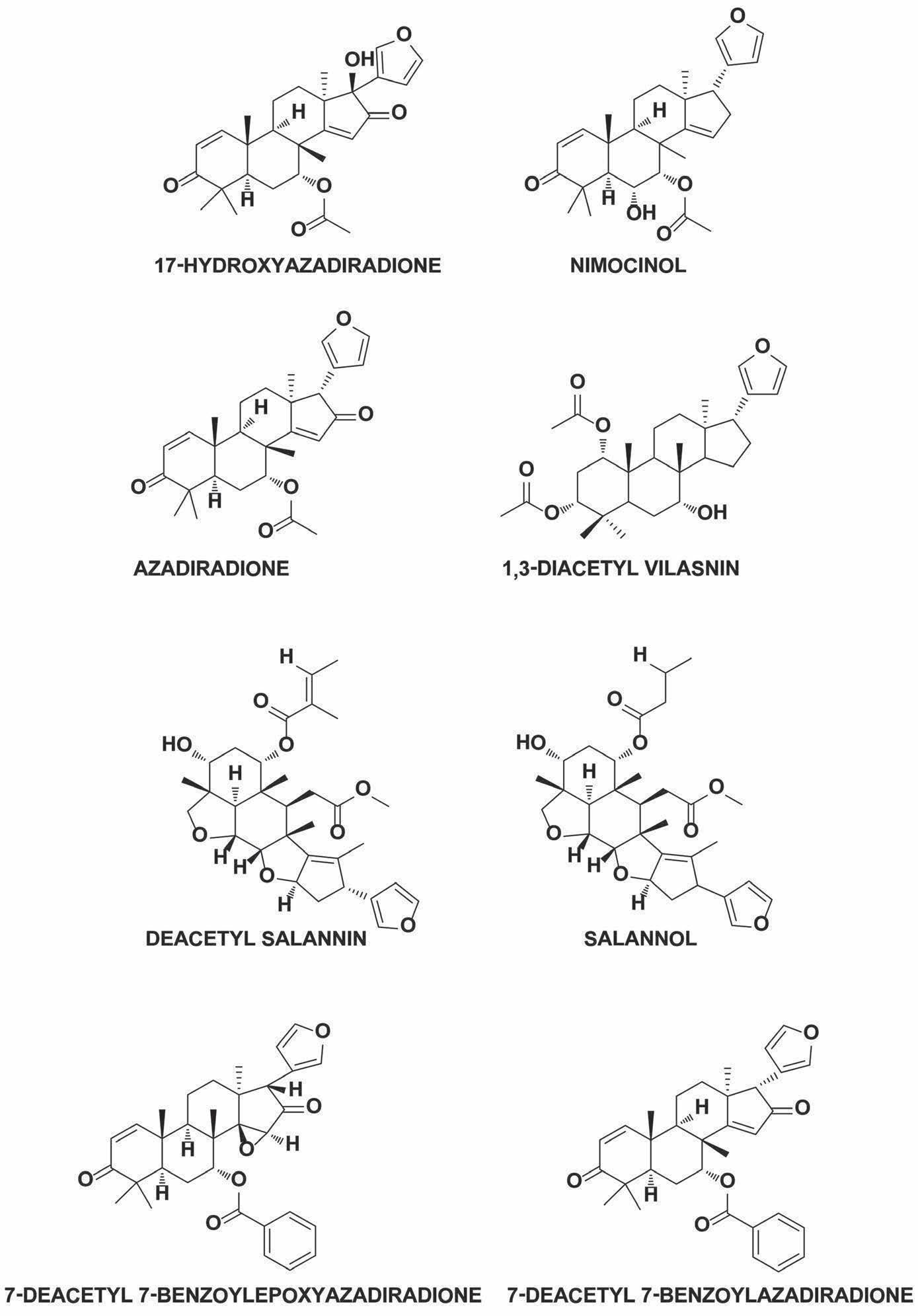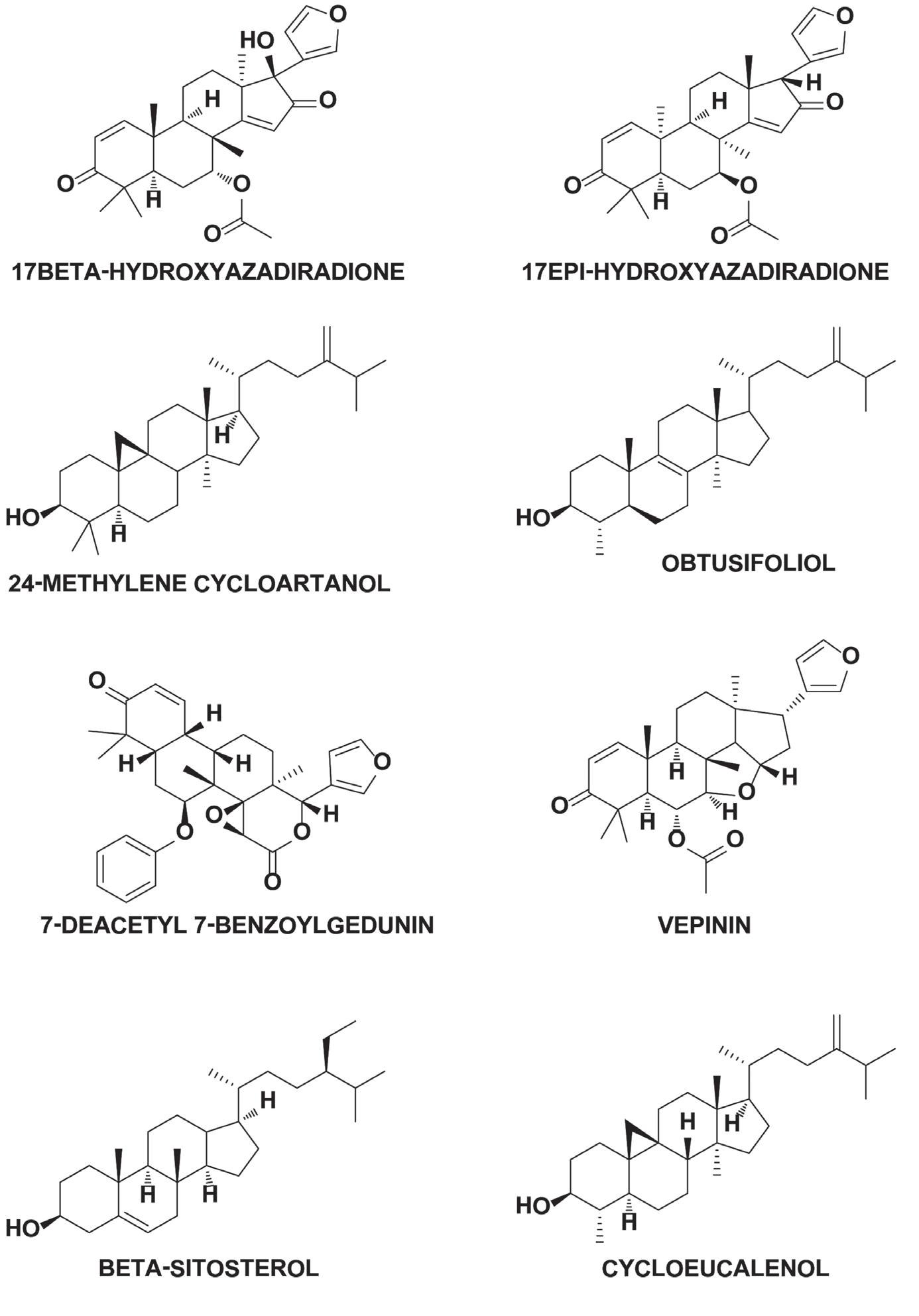About the Editors
Debarshi Kar Mahapatra, PhD
Assistant Professor, Department of Pharmaceutical Chemistry, Dadasaheb Balpande College of Pharmacy, Rashtrasant Tukadoji Maharaj Nagpur University, Nagpur, Maharashtra, India
Debarshi Kar Mahapatra, PhD, is currently an Assistant Professor in the Department of Pharmaceutical Chemistry at Dadasaheb Balpande College of Pharmacy, Rashtrasant Tukadoji Maharaj Nagpur University, Nagpur, Maharashtra, India. He was formerly Assistant Professor in the Department of Pharmaceutical Chemistry, Kamla Nehru College of Pharmacy; RTM Nagpur University, Nagpur, India. He has taught medicinal and computational chemistry at both the undergraduate and postgraduate levels and has mentored students in their various research projects. His area of interest includes computer-assisted rational designing and synthesis of low molecular weight ligands against druggable targets, drug delivery systems, and optimization of unconventional formulations. He has published research, book chapters, reviews, and case studies in various reputed journals and has presented his work at several international platforms, for which he has received several awards by a number of bodies. He has also authored the book titled Drug Design. Presently, he is serving as a reviewer and editorial board member for several journals of international repute. He is a member of a number of professional and scientific societies, such as the International Society for Infectious Diseases (ISID), the International Science Congress Association (ISCA), and ISEI.
Swati Gokul Talele, PhD
Assistant Professor, Department of Pharmaceutics, Sandip Institute of Pharmaceutical Sciences, Savitribai Phule Pune University, Pune, Maharashtra, India
Swati Gokul Talele, PhD, is currently serving as an Assistant Professor, Department of Pharmaceutics at Sandip Institute of Pharmaceutical Sciences. She has 18 years of experience in research along with teaching. She has
published more than 20 research papers in various reputed international and national journals as well as more than 30 review papers. She has also presented research work at several conferences and has received several awards. She has authored the book titled Natural Excipients and has many chapters and books that are in progress. She has supervised many MPharm students and is currently associated with many research projects. She also worked as a College Examination Officer (CEO) for more than three years and is a member of the university examination committee. Dr. Talele has delivered interactive talks at continuous education programs for registered pharmacists and is a life member of the Association of Pharmacy Teachers of India (APTI) and a member of the Indian Pharmaceutical Congress Association (IPCA). Her interests are in the field of nanotechnology, natural polymers, herbal formulations, and radiolabeling-based bio-distribution studies.
Tatiana G. Volova, PhD
Professor and Head, Department of Biotechnology, Siberian Federal University, Krasnoyarsk, Russia
Tatiana G. Volova, DSc, is a Professor and Head, Department of Biotechnology at Siberian Federal University, Krasnoyarsk, Russia. She is the creator and head of the Laboratory of Chemoautotrophic Biosynthesis at the Institute of Biophysics, Siberian Branch of the Russian Academy of Sciences. Professor Volova is conducting research in the field of physicochemical biology and biotechnology and is a well-known expert in the field of microbial physiology and biotechnology. Dr. Volova has created and developed a new and original branch in chemoautotrophic biosynthesis, in which the two main directions of the XXI century technologies are conjugate, hydrogen energy, and biotechnology. The obtained fundamental results provided significant outputs and were developed by the unique biotechnical producing systems, based on hydrogen biosynthesis for single-cell protein, amino acids, and enzymes. Under the guidance of Professor Volova, the pilot production facility of single-cell protein (SCP), utilizing hydrogen, had been created and put into operation. The possibility of involvement of man-made sources of hydrogen into biotechnological processes as a substrate, including synthesis gas from brown coals and vegetable wastes, was demonstrated in her research. She had initiated and deployed in Russia the comprehensive research on microbial degradable bioplastics; the results of this research cover various aspects of biosynthesis, metabolism, physiological role,
structure, and properties of these biopolymers and polyhydroxyalkanoates (PHAs), and have made a scientific basis for their biomedical applications and allowed them to be used for biomedical research. Professor Volova is the author of more than 300 scientific works, including 13 monographs, 16 inventions, and a series of textbooks for universities.
A. K. Haghi
Professor Emeritus of Engineering Sciences, Former Editor-in-Chief, International Journal of Chemoinformatics and Chemical Engineering and Polymers Research Journal; Member, Canadian Research and Development Center of Sciences and Culture
A. K. Haghi, PhD, is the author and editor of 200 books, as well as 1000 published papers in various journals and conference proceedings. Dr. Haghi has received several grants, consulted for a number of major corporations, and is a frequent speaker to national and international audiences. Since 1983, he served as a professor at several universities. He is former Editorin-Chief of the International Journal of Chemoinformatics and Chemical Engineering and Polymers Research Journal and is on the editorial boards of many international journals. He is also a member of the Canadian Research and Development Center of Sciences and Cultures (CRDCSC), Montreal, Quebec, Canada.
Contributors ...........................................................................................................
Abbreviations ........................................................................................................
Preface .................................................................................................................
1. Azadirachta indica: Imperative Mini-Opinions on an Ethnopharmacological Savior....................................................................... 1
Anshda Bhatnagar and Debarshi Kar Mahapatra
2. Arsenals of Pharmacotherapeutically Active Proteins and Peptides: Old Wine in a New Bottle ............................................................................ 29
Kirti Dubli
3. Biotechnological Potential of Hydrogen-Oxidizing Bacteria ................. 135
Tatiana Grigorievna Volova, Evgeniy Gennadievich Kiselev, and Ekaterina Igorevna Shishatskaya
4. Abutilon indicum, Prosopis juliflora, and Acacia arabica as Antibacterial Agents Against Xanthomonas axonopodis pv. punicae ..... 165
Aishwarya A. Andhare and Ravindra S. Shinde
5. Microbial Biotechnology: Synthesis, Production, Challenges, and Opportunities ...................................................................................... 181
Akshada A. Bakliwal, Swapnali A. Patil, Meghawati R. Badwar, and Swati G. Talele
6. Pharmaceutical Natural and Synthetic Colorants, Pigments, Dyes, and Lakes: Applications, Perspectives, and Regulatory Aspects ........... 205
Debarshi Kar Mahapatra and Sanjay Kumar Bharti
7. Microbial Pigments: A Green Microbial Technology ............................. 225
Eknath Ahire, Swati G. Talele, and Gokul S. Talele
8. Ethnopharmacological Perspectives of the Traditional Herb Tabermontana divaricate Linn. .................................................................. 245
Seema Wakodkar, Debarshi Kar Mahapatra, Shilpa Borkar, and Shailaja Latkar
9. A Closer View on Various Reported Therapeutically Active Formulations Containing Aloe vera (Aloe barbadensis) ......................... 259
Vaibhav Shende and Debarshi Kar Mahapatra
10. Sesquiterpenes in Artemisia and Development of Drugs from Asteraceae ...................................................................................................
Francisco Torrens and Gloria Castellano
Contributors
Eknath Ahire
Divine College of Pharmacy, Nanpur Road, Satana, Nasik, Maharashtra, India
Aishwarya A. Andhare
Department of Microbiology, Biotechnology, and Chemistry, Dayanand Science College, Latur – 413512, Maharashtra, India
Meghawati R. Badwar
Department of Pharmaceutics, Sandip Institute of Pharmaceutical Sciences, Nashik Maharashtra India
Akshada A. Bakliwal
Department of Pharmaceutics, Sandip Institute of Pharmaceutical Sciences, Nashik Maharashtra India
Sanjay Kumar Bharti
Institute of Pharmaceutical Sciences, Guru Ghasidas Vishwavidyalaya (A Central University), Bilaspur – 440037, Chhattisgarh, India
Anshda Bhatnagar
Department of Health and Life Sciences, Coventry University, Coventry CV15FB, United Kingdom
Shilpa Borkar
Department of Pharmacology, Kamla Nehru College of Pharmacy, Nagpur – 441108, Maharashtra, India
Gloria Castellano
Departamento de Ciencias Experimentales y Matemáticas, Facultad de Veterinaria y Ciencias Experimentales, Universidad Católica de Valencia San Vicente Mártir, Guillem de Castro-94, E-46001 València, Spain
Kirti Dubli
Hislop School of Biotechnology, Hislop College, Nagpur – 440001, Maharashtra, India, E-mail: kirtidubli@gmail.com
Evgeniy Gennadievich Kiselev
Siberian Federal University, 79 Svobodnyi Av., Krasnoyarsk – 660041, Russia; Institute of Biophysics SB RAS, Federal Research Center “Krasnoyarsk Science Center SB RAS,” 50/50 Akademgorodok, Krasnoyarsk – 660036, Russia
Shailaja Latkar
Department of Pharmacology, Kamla Nehru College of Pharmacy, Nagpur – 441108, Maharashtra, India
Debarshi Kar Mahapatra
Assistant Professor, Department of Pharmaceutical Chemistry, Dadasaheb Balpande College of Pharmacy, Nagpur – 440037, Maharashtra, India; Department of Pharmaceutics, Gurunanak College of Pharmacy and Technical Institute, Nagpur – 440026, Maharashtra India, E-mails: dkmbsp@gmail.com; mahapatradebarshi@gmail.com
Swapnali A. Patil
Department of Pharmaceutics, Sandip Institute of Pharmaceutical Sciences, Nashik Maharashtra India
Vaibhav Shende
Department of Pharmaceutics, Gurunanak College of Pharmacy and Technical Institute, Nagpur – 440026, Maharashtra India
Ravindra S. Shinde
Department of Microbiology, Biotechnology, and Chemistry, Dayanand Science College, Latur – 413512, Maharashtra, India, E-mail: rss.333@rediffmail.com
Ekaterina Igorevna Shishatskaya
Siberian Federal University, 79 Svobodnyi Av., Krasnoyarsk – 660041, Russia; Institute of Biophysics SB RAS, Federal Research Center “Krasnoyarsk Science Center SB RAS,” 50/50 Akademgorodok, Krasnoyarsk – 660036, Russia
Gokul S. Talele
Matoshree College of Pharmacy, Eklahare, Nashik, Maharashtra, India
Swati G. Talele
Department of Pharmaceutics, Sandip Institute of Pharmaceutical Sciences, Mahiravani, Nashik Maharashtra India, E-mail: swatitalele77@gmail.com
Francisco Torrens
Institut Universitari de Ciència Molecular, Universitat de València, Edifici d’Instituts de Paterna, P. O. Box 22085, E – 46071 València, Spain, E-mail: torrens@uv.es
Tatiana Grigorievna Volova
Siberian Federal University, 79 Svobodnyi Av., Krasnoyarsk – 660041, Russia; Institute of Biophysics SB RAS, Federal Research Center “Krasnoyarsk Science Center SB RAS,” 50/50 Akademgorodok, Krasnoyarsk – 660036, Russia, E-mail: volova45@mail.ru
Seema Wakodkar
Department of Pharmacology, Kamla Nehru College of Pharmacy, Nagpur – 441108, Maharashtra, India, E-mail: seemausare@rediffmail.com
Abbreviations
3HHx 3-hydroxyhexanoate
3HO 3-hydroxyoctanoate
3HV 3-hydroxyvalerate
4-AP 4-amino pyridine
4-APIC 4-amino pyridine induced convulsion
4HB 4-hydroxybutyrate
ACTH adrenocorticotrophic hormone
AIA antigen-induced arthritis
ALP alkaline phosphatase
ALT alanine aminotransferase
AM amphiphilic molecules
AOA antioxidant activity
AP activator protein
APIs active pharmaceutical ingredients
AQ assimilation quotient
Art artemisinin
AST aspartate aminotransferase
BCA bicinchoninic acid
BHB biomass of hydrogen bacteria
BL butyrolactone
Ca2+ calcium ions
CAT-1 cationic amino acid transporter-1
CBB coomassie brilliant blue
CC click chemistry
CCS croscarmellose sodium
Cdks cyclin-dependent kinases
CH2O carbohydrate
CHM Chinese herbal medicine
CL chemical ligation
CO carbon monoxide
CO2 carbon dioxide
COX cyclo-oxygenase
CRI chronic renal insufficiency
DAO D-amino acid oxidase
DBil direct bilirubin
DHAA dihydroartemisinic acid
DM diabetes mellitus
DO dis-fathomed oxygen
ECM extracellular matrix
EGF epidermal growth factor
EP ethnopharmacology
EPM elevated plus maze
ER endoplasmic reticulum
FDNB 1-fluoror-2, 4-dinitrobenzene
FSH follicle-stimulating hormone
Fα follitropin α
GABA γ-aminobutyric acid
GHD growth hormone deficiency
GHRH growth hormone-releasing hormone
GI gastrointestinal
GnRHa GnRH agonists
GnRHag GnRH antagonists
GRAS generally recognized as safe
GSH glutathione
HbA adult hemoglobin
HbF fetal hemoglobin
H-bonds hydrogen bonds
HBP hamster buccal pouch
HDL high-density lipoproteins
HPMC hydroxypropyl methylcellulose
HTS high-throughput screening
IDL intermediate-density lipoproteins
IGF-1 insulin growth factor-1
IGF-2 insulin growth factor-2
IGFs insulin growth factors
IM intramuscular
LDL low-density lipoproteins
LDT light-dark transition
LH luteinizing hormone
LSS’s life support systems
MAPKs mitogen-activated protein kinases
MB metoxybutyrate
Abbreviations
Abbreviations
MBC
MCC
MDA
MESIC MIC
MSG MSU
NaOH NCL
PAAc
PDA
PEO-PPO-PEO
PHAs
PIC
PKB
PMAA-gEG
POMC
PTH
PTZ
PTZIC
PWS RA
RANK
RCr
RFLP ROS
SBP2
SC
SCP
SCr
minimum bactericidal concentration
microcrystalline cellulose malondialdehyde
maximal electroshock-induced convulsion
minimum inhibitory concentration monosodium glutamate
model of monosodium urate
sodium hydroxide
native chemical ligation
National Institute of Health nitric oxide
natural products
osteoarthritis
open-field test
polycarbophilpolyacrylic acid photodiode array
poly(ethylene oxide)-poly(propylene oxide)poly(ethylene oxide)
polyhydroxyalkanoates
picrotoxin-induced convulsion
protein kinase B
poly(methacrylic acid g-ethylene glycol)
pro-opiomelanocortin
parathormone
pentylenetetrazole
pentylenetetrazole induced convulsions
Prader-Willi syndrome rheumatoid arthritis
receptor activator of NF-κB
renal creatinine
restriction fragment length polymorphism
reactive oxygen species
respiratory quotient
urea
S-adenosyl methionine
SECIS-binding protein 2
subcutaneous
single-cell protein
serum creatinine
Abbreviations
Se selenium
Sec selenocysteine
SelA selenocysteine synthetase
SGA small for gestational age
SHOX-D short stature homeobox-containing gene deficiency
SIC strychnine-induced convulsions
SL Staudinger ligation
SMA spontaneous motor activity
SPPS solid-phase peptide synthesis
SPR surface plasmon resonance
SPS solution-phase synthesis
SPS2 seleno-phosphate synthetase 2
SRP signal recognition particle
SSF solid-state fermentation
SSG sodium starch glycolate
ST somatotrophin
STAT signal transducer and activator of transcription
STL sesquiterpene lactone
STR ST receptors
TBil total bilirubin
TEA triethanolamine
TGF transforming growth factor
TM traditional medicine
TP total proteins
TS turner syndrome
UPLC ultra-performance liquid chromatography
VLDL very-low-density lipoproteins
WHO World Health Organization
ZOI zone of inhibition
Preface
Biologically active natural products (NPs) have provided considerable value to the pharmaceutical industry over the past half-century.
Natural products and their substructures have long been valuable starting points for medicinal chemistry and drug discovery. Since the earliest days of medicine, we’ve turned to nature for our treatments. “Natural medicines” (which include animal- and mineral-sourced medicines as well as plants) have been significant source materials for medicine discovery over the past several decades. Thousands of compounds have been isolated from them, developed into pharmaceuticals, and used as conventional medicines. Herbal supplements, nutraceuticals, and other herbal healthcare products are also becoming familiar in our daily lives.
In recent decades, natural products have undisputedly played a leading role in the development of novel medicines. Yet, trends in the pharmaceutical industry at the level of research investments indicate that natural product research is neither prioritized nor perceived as fruitful in drug discovery programs as compared with incremental structural modifications.
The tree, which is called Neem (Azadirachta indica) is a natural tropical evergreen tree and found to be deciduous in drier regions native to the Indian sub-continent. Chapter 1 focuses on the ethnopharmacological cum modern perspectives of Neem (leaf, seed, bark, flower, and oil) extracts and products in context to diabetes, cancer, hypertension, AIDS, infections, ulcer, fertility, and gynecological problems, common fever, sexually transmitted diseases, skin diseases, leprosy, and dental diseases. Comprehensive phytochemical structures are highlighted in this chapter.
In Chapter 2, it is shown that peptides and proteins are a major fraction of all the molecules in the body. They are everywhere in the body transmitting messages in the form hormones, quickening the reaction as enzymes, transport oxygen via hemoglobin like transport proteins, providing structural skeleton to the organisms in the form of collagen present in every type of connective tissue, in therapeutics as agonist and analog of peptides, etc. The resourcefulness of proteins is an essence of life.
Chapter 3 provides an overview of the results of a study of the biotechnological potential of hydrogen-oxidizing bacteria, obtained at the Institute of Biophysics SB RAS and Siberian Federal University. The controlled culture
of hydrogen bacteria for several years has been studied in three directions: (i) the hydrogen bacteria-regenerative link of human life support systems (LSSs); (ii) Biomass of hydrogen bacteria (BHB)-potential protein source; (iii) Hydrogen bacteria and the synthesis of biodegradable polymers. It has been shown that a culture of hydrogen together with water electrolysis can solve the main tasks of human LSSs: oxygen supply, assimilation of released CO2, utilization of human wastes and water treatment, and synthesis of protein-rich biomass. Technology has been developed for the synthesis of protein biomass on hydrogen bacteria (BHB); 10 tons of biomass were studied in rations of tipsy, farm animals, and fur-bearing animals. The possibility of replacing 35–50% of proteins in BHB feeds without a decrease in animal productivity was shown. The ability of hydrogen-oxidizing bacteria to synthesize PHA under autotrophic and heterotrophic conditions makes them good candidates for commercial production of PHAs. Researchers tested different modes of cultivation of hydrogen bacteria and on hydrogen, and synetzivroany PHAs of various chemical compositions. The influence of the set and ratio of monomers in PHA on their basic properties was studied. The prospects of the use of polymers for various applications. Xanthomonas axonopodis pv. punicae causes bacterial blight disease in pomegranate. The present investigation was initiated to find a suitable alternative to synthetic antibiotics for the management of plant diseases caused by bacteria. Chapter 4 was aimed to use wild plant species viz., Abutilon indicum, Prosopis juliflora, and Acacia arabica as Antibacterial agent against Xanthomonas axonopodis pv. punicae. The aqueous extracts of Abutilon indicum, Prosopis juliflora, and Acacia arabica plants has Antibacterial activity against Xanthomonas axonopodis pv. punicae. The antibacterial activity was tested by well diffusion assay, minimum inhibitory concentration (MIC), and minimum bactericidal concentration (MBC). The maximum activity recorded in P. juliflora (MIC = 1.03 mg ml–1 and MBC = 0.15 mg ml–1) and A. arabica (MIC = 1.00372 mg ml–1 and MBC = 2.58 mg ml–1) against X. axonopodis pv. Punicae, while the lowest activity was recorded by A. indicum (MIC = 0.619 mg ml–1 and MBC = 0.923 mg ml–1). The highest ZOI was shown by P. juliflora while lowest ZOI was shown by A. indicum The results infer that the extracts of Prosopis juliflora and Acacia Arabica are highly sensitive against the Xanthomonas axonopodis pv. punicae. Plant extracts exhibited antibacterial activity with the potential to be used in the management of many plant diseases as an alternative to chemical antibiotics. The further phytochemical analysis is required to identify the bioactive compounds responsible for antibacterial activity.
Microbial biotechnology includes the utilization, genetic control, and modification of micro-organisms for making commercially valuable products, which involve fermentation and various upstream and downstream processes. From the early years, microorganisms utilized for supplying products such as bread, beer, and wine. Microorganisms produce a stunning exhibit of profitable products that are necessary for their own advantages. Agricultural production is important to fulfill nourishment prerequisites for the developing total population. However, its acknowledgment is related with the mass utilization of non-inexhaustible characteristic assets and with the outflow of greenhouse gases causing atmosphere changes. The researcher’s challenge is to meet practical ecological and conservative issues without trading off yields. This chapter includes the exploration endeavors that went for improving a reasonable and solid generation through a suitable administration. Also, it includes advancement in technologies for formulation and applications dependent on specific plant-related microorganisms. At last, the challenges and opportunities to oversee normally existing microbial populations, including those non-culturable, are investigated in Chapter 5.
In Chapter 6, it is shown that color has a complex artistic, physiological, symbolic, psychological, and associative role for humans. The modern researches have suggested that product color also influence the therapeutic efficacy. The chapter exclusively focuses on the role, applications, utility, safety guidelines (as per FDA, WHO, EC, etc.), environmental aspects, handling precautions, stability, blending, storage, regulatory concern (European Union Legislation, United States Union Legislation, Licensing Authority Approval, and The Food, Drug, and Cosmetic Act) of various synthetic and natural colorants, dyes, pigments, aluminum or calcium lakes, inorganic colors, etc., like β-carotene, indigo carmine lake, sunset yellow lake, brilliant blue lake, amaranth lake, quinoline yellow lake, Allura red lake, tartrazine, erythrosine, Patent Blue V, etc., in pharmaceutical dosage forms such as tablets (wet granulation and direct compression), pellet, tablet coating (sugar coating and film coating), capsules (hard gelatin capsule and soft gelatin capsule), ointment, solution, toothpaste, etc. In this modern avenue, the colorants are needed to be judged for their benefit ratio, regulatory restrictions, innovations, discoveries, and safety.
In Chapter 7, microbial pigments are obtained from pure natural origin, the origin is the renewable that is simply degradable, and without manufacturing of refractory intermediates when they arrive in the atmosphere. Natural pigments have increasing significance not only in colors but also since of their harmless and medicinal characteristics. The consciousness
amongst societies towards natural pigments and there safe properties with very lesser side effects as compared to artificial colors and dyes. The uninterrupted use of artificial colorants or pigments not only causes environmental pollution but also lots of fitness-related complications in humans. Consequently, it is necessary to explore different natural origins of pharmaceutical and food-grade pigments and their prospective applications. In future natural products manufactured by microbes as pigments are nontoxic and healthier than artificial pigmented products.
In Chapter 8, it is shown that the plants are the leading source with therapeutic significance from thousands of years. T. divaricata L. (Apocynaceae) renowned medicinal plant used to treat a substantial number of human ailments and extensively scattered in the various parts of Africa, America, and Asia. The study critically evaluates the phytochemistry, pharmacology, ethnobotanical, and medicinal uses of T. divaricata L. species. The plant in whole or its peculiar segments applied for treatment against ulceration, fracture, postnatal recovery, syphilis, fever, tumors, and orchitis in form of boiled juice, decoctions infusions, and poultices, in the region of Southeast Asia. The various studies cataloged alkaloids as the influential phytochemical in accession to phenols, saponins, and sterols with immense biological activities such as antimicrobial, analgesic, anthelmintic, vasorelaxation, antiviral, and cytotoxicity. The medicinal uses of different parts of T. divaricate across Asia have been estimated by scientific data. Future studies focus on different phytoconstituents, such as jerantinine and vincamajicine alkaloids structurebioactivity relationship, which could potentially improve the future application towards reversing anticancer drug resistance.
The aim of Chapter 9 is to concentrate on differing kinds of Aloe plant formulations and preparation procedures or methodology. In many parts of the world, there is a rich tradition of the oldest medicinal plant ever known and the most applied medicinal plant formulations. The Aloe plant has been renowned and in use for hundreds of years for its health, beauty, medicinal, and skincare properties. In the whole world, there are over 300 species of Aloe plant, which is succulent and the most common form is Aloe barbadensis Miller (Family: Liliaceae). It may be a woody plant or dendriform, perennial, xerophytic, succulent, or chromatic color plant with triangular, fleshy leaves with saw-toothed edges, yellow hollow flowers, and fruits that contain varied seeds. Multiple clinical studies have confirmed its treatment as it has anti-oxidant activity against free radicals, accelerates the healing of burns, reduces constipation, may improve skin and prevent wrinkles, lower blood sugar level, dentistry for wound healing effect, etc.
The leaves contain 75 active constituents such as vitamins, minerals, natural sugar, enzymes, lignin, saponins, hydroxy acid, amino acid, etc. The varied bioactive compounds exhibit emollient, purgative, medicinal drug, antimicrobial, anthelmintic, antifungal, aphrodisiac, anti-septic, and cosmetic values. The study of different formulations of Aloe vera plant like a gel, beads, tablet, capsule, nanoparticles, microparticles, face mask, hydrogel, film, emulgel, transdermal patch, nanosuspension, chewing gum, etc.
The aim of Chapter 10 is to develop an accurate and fast ultra-performance liquid chromatography (UPLC) coupled with a photodiode array (PDA) method for the simultaneous determination of artemisinin (Art), arteannuin B, arteannuin C, dihydroartemisinic acid (DHAA) and artemisinic acid in Artemisia annua. The established ultra-performance liquid chromatographyphotodiode array method is valuable for improving the quantitative analysis of sesquiterpene components in Artemisia annua. Budlein Ais a sesquiterpene lactone (STL) with antinociceptive and anti-inflammatory properties, related to the inhibition of pro-inflammatory cytokines and neutrophil recruitment. The effect of budlein A is evaluated in antigen-induced arthritis (AIA) in mice. Gout is the most common inflammatory arthritis worldwide. It is a painful inflammatory disease, induced by the deposition of monosodium urate crystals in the joints and peri-articular tissues. Sesquiterpene lactones are secondary metabolites biosynthesized mainly by species from the family Asteraceae. They present anti-inflammatory, analgesic, antitumoral, antiparasitic, and antimicrobial activities. The efficacy of sesquiterpene lactone budlein A is evaluated in a model of acute gout arthritis in mice.

CHAPTER 1
